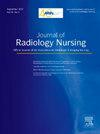Evaluation of the Compliance Rate of Patient Handover Task Among Nurses at the Clinical Departments of City Children's Hospital and Associated Factors
Q3 Nursing
引用次数: 0
Abstract
Objective
This study aims to evaluate the compliance rate of patient handover practices among nurses at the City Children's Hospital using the Situation, Background, Assessment, Recommendation (SBAR) checklist and to identify associated factors influencing adherence.
Methodology
A cross-sectional descriptive study was conducted, observing 205 patient handover cases performed by nurses in clinical departments of the hospital. Data were collected using the SBAR model as a framework for evaluation.
Results
The compliance rate for the “Situation" (S) component ranged from 52.7% to 92.2%. For “Background" (B), compliance varied between 75.6% and 82.4%. The “Assessment" (A) component exhibited compliance rates from 60.5% to 91.2%. Finally, the “Recommendation" (R) component showed compliance levels between 71.2% and 83.9%. While certain aspects of the SBAR process demonstrated high adherence and effective implementation, other areas showed varying levels of compliance, indicating room for improvement.
Conclusions
The findings reveal considerable variation in the adherence to the SBAR handover process. While some steps are effectively implemented with high compliance rates, others require targeted interventions to improve adherence and ensure consistency in patient safety practices.
市儿童医院临床科室护士病人交接任务执行情况评价及影响因素
目的采用情境、背景、评估、建议(SBAR)量表评估市儿童医院护士对病人交接实践的依从率,并探讨影响依从性的相关因素。方法采用横断面描述性研究方法,对医院临床科室护士进行的205例患者交接进行观察。使用SBAR模型作为评估框架收集数据。结果“情况”(S)成分的符合率为52.7% ~ 92.2%。对于“背景”(B),符合性在75.6%到82.4%之间变化。“评估”(A)部分的符合率从60.5%到91.2%不等。最后,“建议”(R)组件的合规水平在71.2%至83.9%之间。虽然SBAR过程的某些方面表现出高度遵守和有效执行,但其他领域表现出不同程度的遵守,表明有改进的余地。结论研究结果揭示了SBAR移交过程依从性的相当大的差异。虽然一些步骤得到了有效实施,合规率很高,但其他步骤需要有针对性的干预措施,以提高依从性,并确保患者安全实践的一致性。
本文章由计算机程序翻译,如有差异,请以英文原文为准。
求助全文
约1分钟内获得全文
求助全文
来源期刊

Journal of Radiology Nursing
Nursing-Advanced and Specialized Nursing
CiteScore
0.80
自引率
0.00%
发文量
95
审稿时长
57 days
期刊介绍:
The Journal of Radiology Nursing promotes the highest quality patient care in the diagnostic and therapeutic imaging environments. The content is intended to show radiology nurses how to practice with compassion, competence, and commitment, not only to patients but also to the profession of nursing as a whole. The journal goals mirror those of the Association for Radiologic & Imaging Nursing: to provide, promote, maintain , and continuously improve patient care through education, standards, professional growth, and collaboration with other health care provides.
 求助内容:
求助内容: 应助结果提醒方式:
应助结果提醒方式:


